
Keppel Buys Global Marine Group
middle-market private equity, has through its investment affiliates sold Global Marine Group (GMG) to Keppel Infrastructure Fund (KIF).With a legacy dating to 1850, GMG is one of the leading providers of subsea telecom maintenance and installation services, supporting mission-critical global communications infrastructure.Headquartered in the United Kingdom, the company serves a diverse base of customers with high-reliability solutions that ensure the integrity and performance of undersea networks worldwide.Terms of the transaction with KIF were not disclosed.“Our successful partnership with management
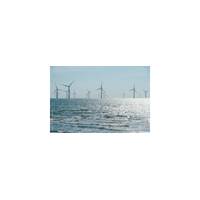
Subsea Industry Paves the Innovation Path for Floating Wind, says GUH
. Prioritizing and investing in the UK’s underwater industry will help accelerate the transition of our oil and gas supply chain and cement the UK as an international center of excellence. Not only will it secure our energy supply, but it will also protect critical underwater energy and communications infrastructure. Given the heightened threat from rogue nations, the underwater battlespace has become a high priority for the UK and wider NATO allies.”In its response to Invest 2035, the government’s industrial strategy consultation, GUH set out what the underwater industry will need
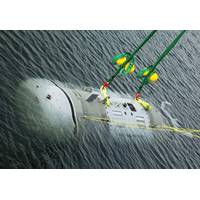
UUV Integration Will Transform Submarine Tactics
more clandestinely and at standoff range. For example, UUVs could conduct intelligence, surveillance, and reconnaissance (ISR) and intelligence preparation of the operational environment (IPOE) missions in contested or denied areas. This might include localizing seabed sensor or communications infrastructure for a follow-on strike, or reconning enemy coastal installations and operations at close range. UUV-enabled mine countermeasures (MCM) would enable covert minefield mapping and/or mine neutralization, which would be valuable in environments where surface mine countermeasures would put
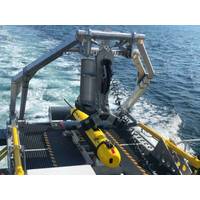
KATFISH Towed Sonar find niche in Defense, Offshore Energy
like KATFISH.While not a new threat, seabed infrastructure protection is once again front and center following the recent Baltic pipeline leaks. Every nation is now acutely aware of the threat and potential impact of various state and non-state actors engaging in sabotage of energy and communications infrastructure on, or beneath, the seafloor. Today, more than 400 undersea data cables carry about 98% of international internet data and telephone traffic around the world. With so many nations depending on the thousands of kilometers of subsea pipelines, power, and communications cables that traverse
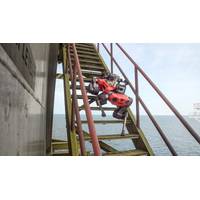
ROBOTICS: Meet Your New Offshore Robotic Co-workers; Charles, Eddie, ANYmal & Spot
challenges, there are other tasks to solve. One challenge is that existing infrastructure hasn’t been built with robots in mind. Building environments that are prepared for robots would make some of their life easier, especially for maintenance tasks. That includes having reliable communications infrastructure, enabling connectivity with the robot and the human in the loop supervision or control that will be essentially initially. While the robots have computing on board, access to the cloud and cloud applications is an important topic, says Biegl. “If we’re operating 200 km offshore
Aquabotix to Support U.S. Navy
, unmanned underwater vehicle use has been challenged by limitations in endurance and difficulties in transferring data. FDECO’s publicly-stated mission is to seek to prototype a forward deployed, open, scalable and coordinated undersea energy replenishment, data management, and communications infrastructure for undersea vehicles and sensors.This Consortium brings together the defense industry to conduct prototype technology research in support of FDECO’s goals. Aquabotix was accepted as a member of this Consortium as it has demonstrated a clear ability to make a meaningful technical
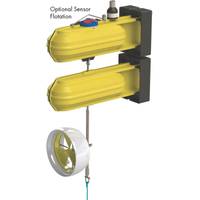
Atlantic Canada Profiles: Seaformatics Systems
way oceans are monitored subsea – especially in remote and difficult to access, harsh environments – through its subsea power harvesting and telemetry systems. A barrier to collecting long term data in these environments is a sustainable supply of power to the instruments and data communications infrastructure. With the challenges imposed by such environmental conditions one of the only suitable power sources are batteries. Specialized vessels must be used to deploy and recover data from the systems that have exhausted their batteries – a very costly, time consuming, and risky endeavor
Inmarsat C Celebrates 25 Years Saving Llives at Sea
available to maritime safety information providers to broadcast safety messages. “Safety at sea forms the foundation of our organisation; it’s in our DNA,” continues Spithout: “We have been working tirelessly to provide critical always-on, reliable communications infrastructure that seafarers, vessels and nations depend on to help save lives at sea. “In 2020 we expect to launch latest generation satellite constellation – Inmarsat-6; continuing our 35+ year commitment to L-band and safety services,” Spithout added.
SITECH Technology Dealer Established in Myanmar
systems for the contractor’s entire fleet of heavy equipment regardless of machine brand, along with Trimble’s portfolio of Connected Site solutions—site positioning systems, construction asset management services, software and powerful wireless and Internet-based site communications infrastructure. The construction professionals at each SITECH Technology Dealership can advise contractors on the appropriate construction technology solutions to utilize, and can provide high-quality local customer service, personalized training and technical support. As authorized dealers


 February 2025
February 2025





